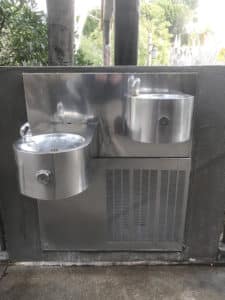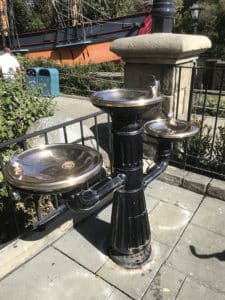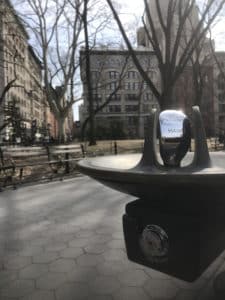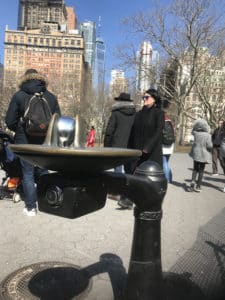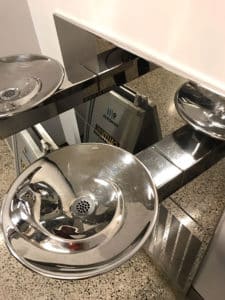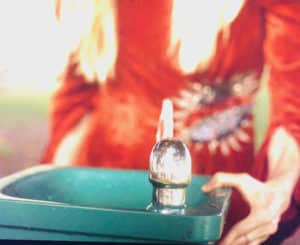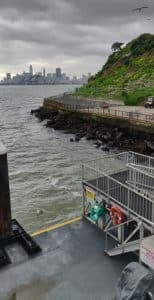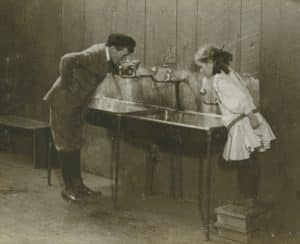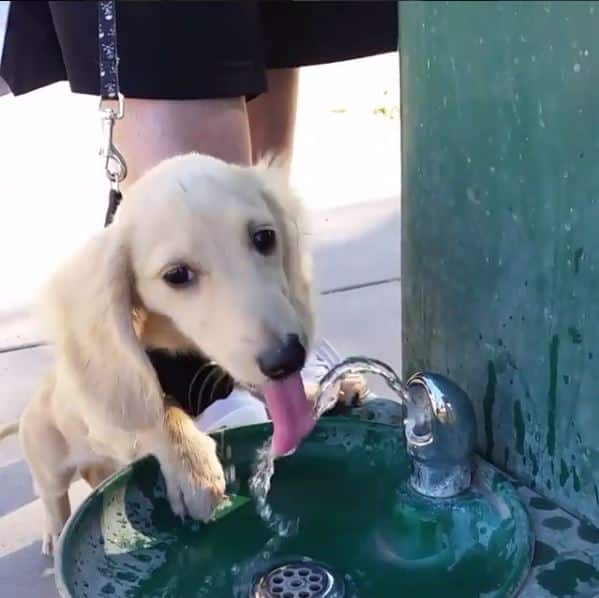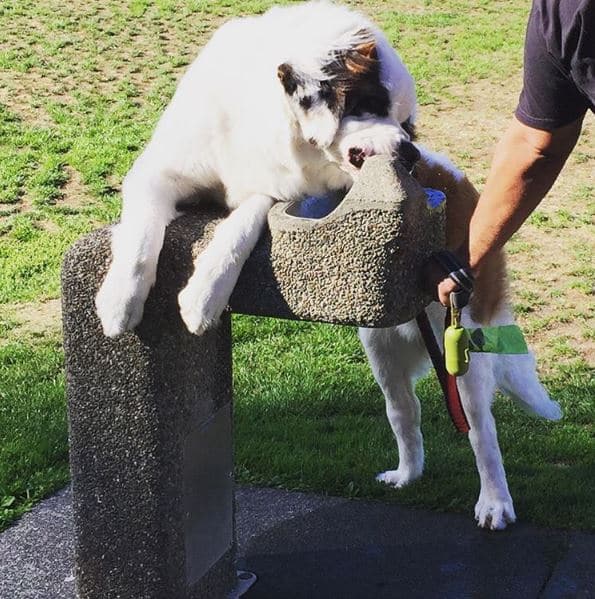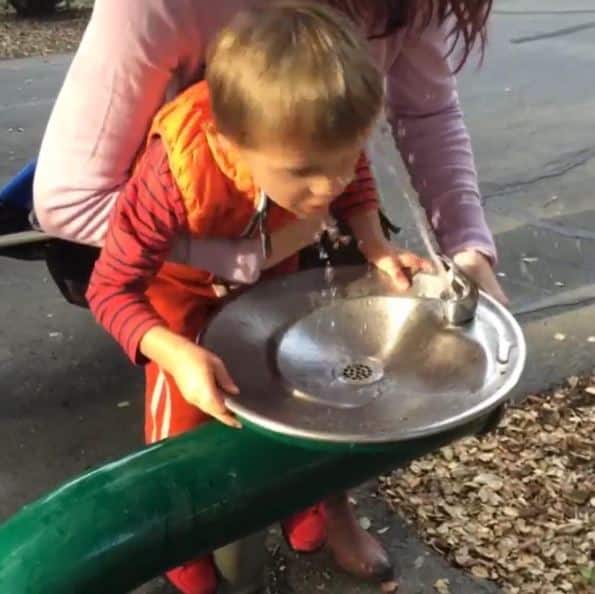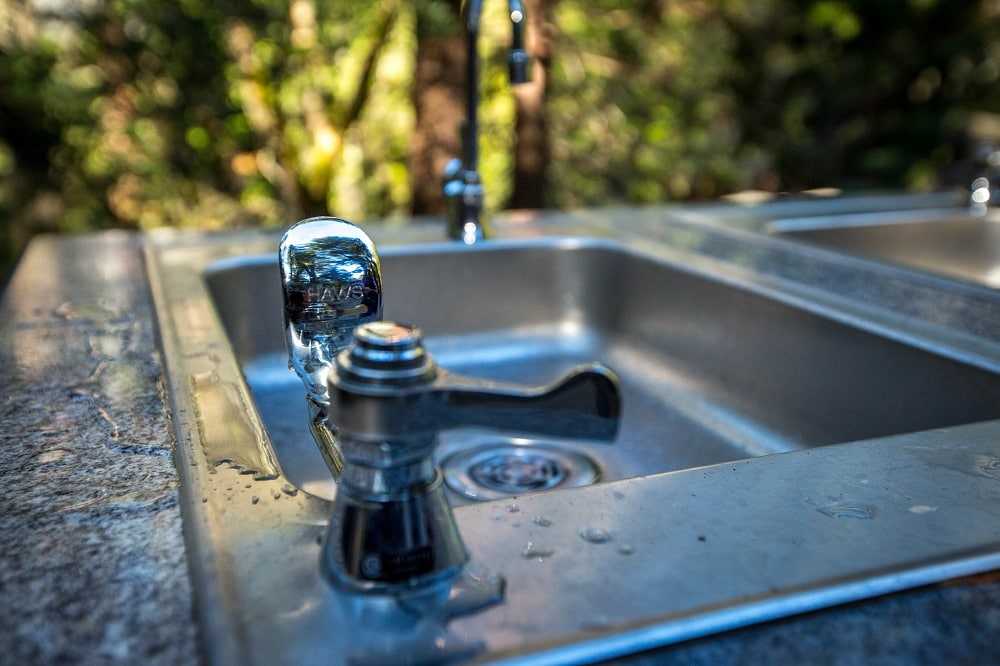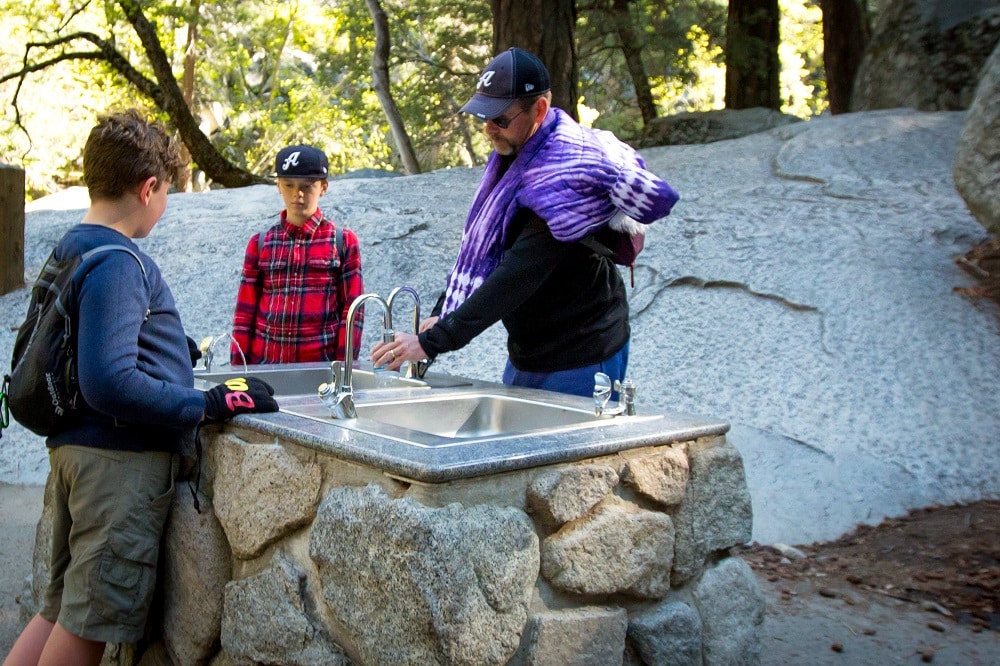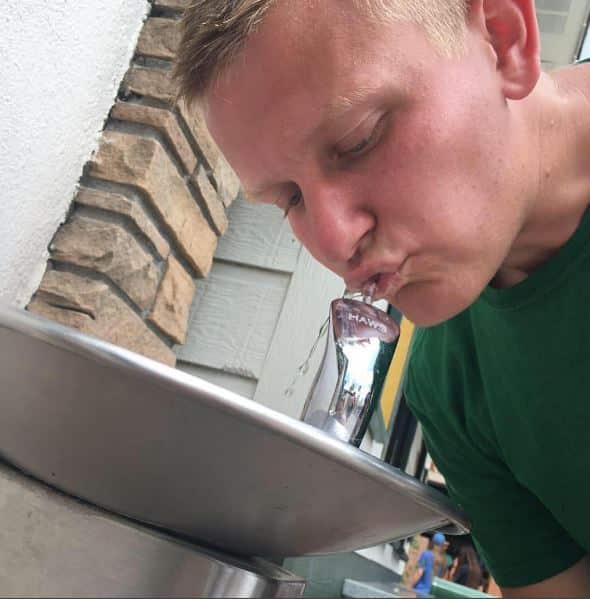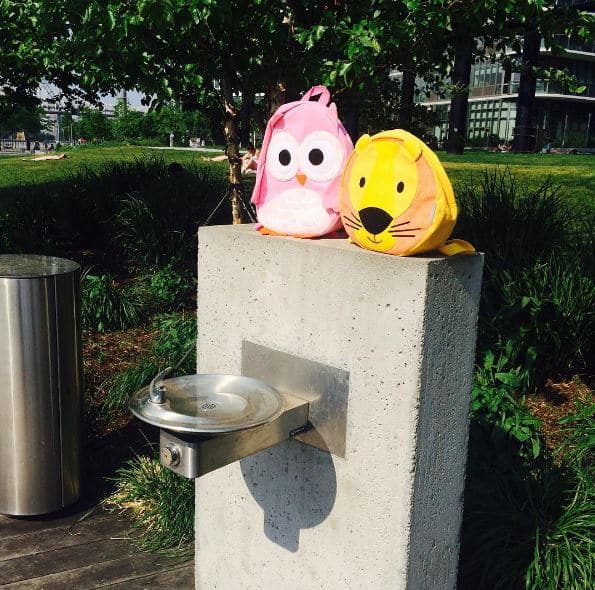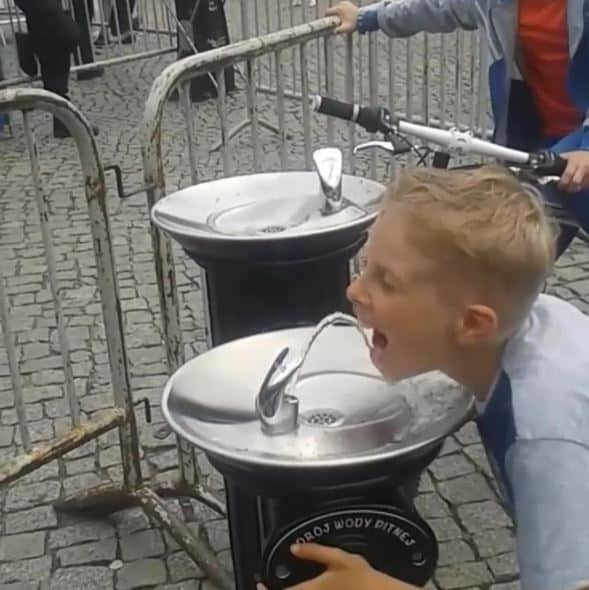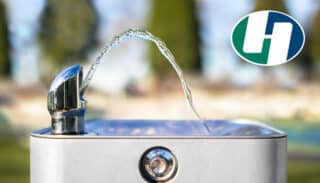Microplastics in Plastic Bottles
Less than a month into the New Year, researchers at Columbia University and Rutgers University issued findings on the distressing micro and nano-plastics found in plastic water bottles. The study revealed a staggering average of 240,000 microplastics in everyday liters of water. Researchers took five separate samples looking at three popular bottled water brands. Although the sampled brands remain anonymous, the microplastic levels ran between 110,000 and 400,000 per liter.
What does this mean for human health? Currently, research on the effects of micro and nano-plastics on human health is minimal. However, researchers do know some things to be true. Once certain microplastics leak into an environment, they will likely stay forever. The human gut accumulates much of the micro and nano-plastics ingested. Researchers attribute this to the minuscule size of specific plastic particles. Some variations present in bottled water are less than a micrometer (a millionth of a meter).
Recent studies have proven that the time and intensity of microplastic exposure impact the effects. Many studies consider drinking water the most pervasive issue of long-term exposure to plastic particles. These analyses found adverse effects on mouse models, saying “long-term inflammation of particles in liver tissues and chronic inflammation could lead to liver disease and chronic pulmonary disorders” (Gambino et al.).
Despite minimal research on the human effects, Duke University professor of medicine and comparative oncology director Jason Somarelli found more than 100 known cancer-causing chemicals in bottled water plastics in work yet to be published.
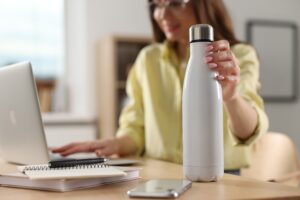
Reusable Water Bottles Have Become the New Norm
Not only can reusable water bottles reduce the time and intensity of microplastic exposure, but they also improve the global carbon footprint. A study conducted by Oceana estimates that only a 10% increase in market share for soft drink beverages sold in refillable bottles could reduce marine plastic pollution by 22%. This reduction would help prevent tap water microplastic contamination, ultimately mitigating climate change.
Individuals can also make a tangible impact by substituting plastic water bottles with refillable ones. According to a report published by Plastic Oceans, plastic bottles make up 14% of littered waste. When one person switches to a reusable bottle, they would have prevented approximately 170 plastic bottles from being improperly discarded in just one year.
The cost effectiveness of reusable water bottles is often overlooked. A paper produced by The Earth Policy Institute explains that bottled water costs more than gasoline at $10 per gallon. Comparatively, the average cost of tap water is about $0.002 per gallon. For manufacturers, this means lower production costs.
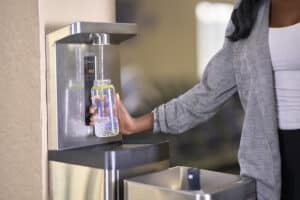 Filtered Bottle Filling Stations Facilitate Good Environmental and Human Health
Filtered Bottle Filling Stations Facilitate Good Environmental and Human Health
A popular alternative on the rise are filtered bottle-filling stations like the Hydration Station Bottle Filler and Drinking Fountain. These stations compliment reusable water bottle use by encouraging people to refill their water throughout the day.
While the initial installment of hydration stations may seem costly, they have a lifespan of up to 12 years, provided they are cost-efficient and eco-friendly. Research at the University of Chicago examined an average of 177,480 plastic water bottles saved across 102 bottle-filling stations over two weeks (Piccirillo-Stosser 25). Over a nine-month school year, this constitutes around 3,470,177 plastic water bottles.
Alongside cost efficiency and environmental mitigation, bottle fillers and drinking fountains improve general health. Unlike reusable bottles alone and plastic water bottles, filtered bottle filling stations guarantee fresh, filtered water. Some benefits of drinking filtered water include increased hydration, better taste and smell, decreased risk of certain cancers, and a strengthened immune system.
Seeking Sustainable Bottle Fillers
The findings of microplastics in plastic water bottles emphasize the importance of mindfulness when it comes to hydration. While transitioning to reusable water bottles protects individual and environmental health, the communal impact of bottle fillers and fountains amplifies the efficacy of health-driven initiatives.
Click here to learn more about the Hydration Station Bottle Filler and Drinking Fountain. Choose wisely for a healthier and greener tomorrow.
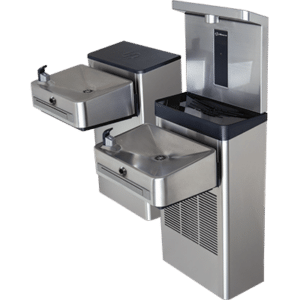
Whether you’re taking a stroll through Central Park or chasing your kids through The Happiest Place on Earth, most likely you’ve come across a Haws drinking fountain and didn’t even know it. Or maybe you did.
We are everywhere, and below are a few images to prove it.
Around Disneyland
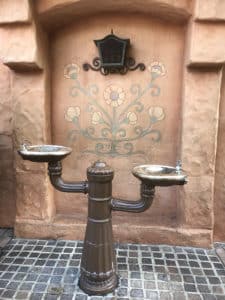
Throughout New York City
Did you know that Haws can create custom drinking fountains? We can customize the color, materials, coating, and much more. A great example is the gold-colored fountain at the Guggenheim Museum, or the shiny coating on the fountain at the One World Trade Center, both shown above. Learn more here
Even on TV
Can you guess the show? Here’s a hint the answer: Netflix’s The OA (season 2, episode 7)
Even our emergency equipment has been spotted on Alcatraz Island.
The next time you’re out, take a look at the fountains in your path. Find a Haws product? Submit it to [email protected] for a social share on our Facebook or Twitter page!
ADA standards for protruding drinking fountains
By Joanne Benz
The United States Access Board is an independent federal agency that promotes equality for people with disabilities through leadership in accessible design and the development of accessibility guidelines and standards. The Board is made up of twelve representatives from many federal department and another thirteen are members of the public appointed by the and the majority of whom must have a disability. The Board develops and maintains design criteria for everything people encounter in their day to day lives. One guideline that Haws is most interested in is the Standard for Protruding Objects because there are guidelines in this Standard for drinking fountains.
Watch the video and pay close attentions around minute 4.
How To Prepare Your Haws Outdoor Fountains for WinterDuring cold seasons, it is important that outdoor drinking fountains and bottle fillers are equipped for the potentially harsh winter weather. Many drinking fountains and bottle fillers are designed to withstand extreme climate conditions from an external durability standpoint, yet it is pertinent to ensure internal waterways do not freeze and create damage.
If you have an outdoor drinking fountain and/or bottle filler that has a bury valve installed below the frost line and a freeze-resistant push button, or an outdoor wall-mounted fountain with a freeze valve box and waterways inside of the building (kept at above 50°F [10°C]), then the equipment does not require any additional maintenance or preparation for winter conditions and can be left on for use throughout all seasons.
Any hydration products installed in areas that reach freezing conditions should be inspected for freeze-resistant components. Check the owner’s manual for component details. If it is determined that the equipment is not freeze-resistant by design, then follow the steps outlined below to winterize your outdoor hydration equipment.
Winterizing Your Haws Drinking Fountain or Bottle Filler
All Haws drinking fountains and bottle fillers use a patented push button activation valve (5874PB/5874PBF) with front access for adjusting stream height, and for replacing the cartridge by use of a simple spanner wrench. This allows for easier access and maintenance.
- STEP 1: Turn off water via the shutoff or on/off valve
- STEP 2: Disconnect supply line tubing from the shutoff valve at the lowest point and let water drain from the tubing
- STEP 3: Remove the cartridge from the push button valve
- A. Remove button using the provided spanner wrench. Button must be rotated so spanner wrench holes line up. Twist off push button.
- B. Remove the cartridge retaining nut using the spanner wrench by twisting counterclockwise until the nut pops off
- C. Remove cartridge and store for reuse
- STEP 4: Thread the retaining nut back on along with the push button
For models that do not use the Haws Model 5874PB Push Button or any other questions, please call Technical Support at 800.766.5612 or [email protected].
How Safe Are Drinking Fountains in NYC?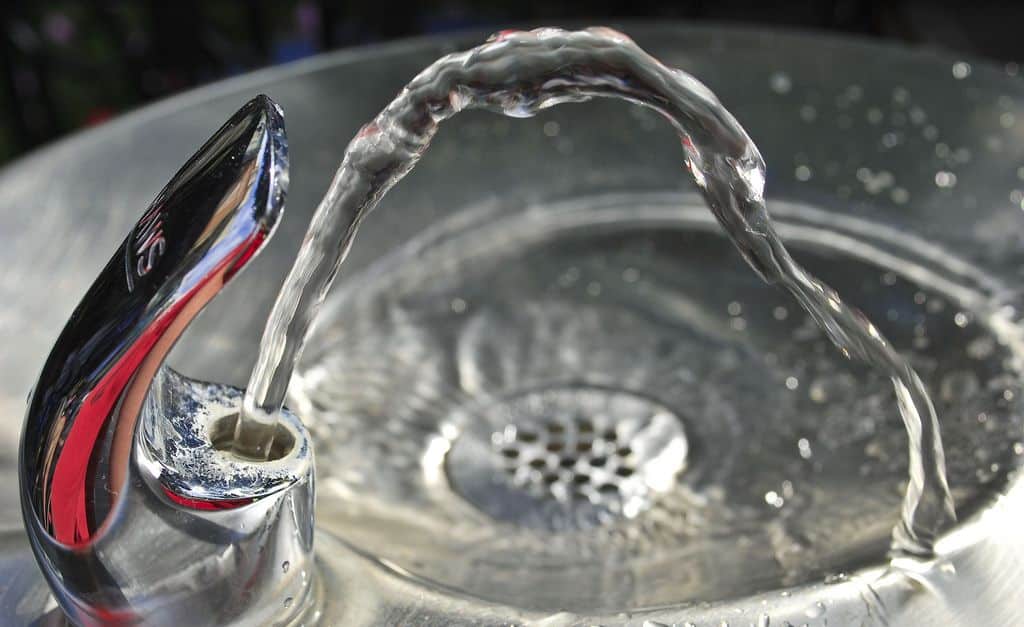 Clean water has been a topic of both national and local concern in recent years. Flint, Mich., famously made headlines in 2014 for its dangerous, lead-tainted water supply — a major threat to children’s brains and nervous systems, as well as adults’ reproductive systems.
Clean water has been a topic of both national and local concern in recent years. Flint, Mich., famously made headlines in 2014 for its dangerous, lead-tainted water supply — a major threat to children’s brains and nervous systems, as well as adults’ reproductive systems.
People disparage drinking fountains all the time, but they provide a needed service for all of us – providing water to stay hydrated. Recently The New York Post tested water fountains in the most frequented parks in NYC, and found that all met or exceeded the state’s guidelines for water quality. New York City has a reputation for having the “highest quality” tap water and this testing only helps to verify that.
Haws® Attends IFMA & A+A in October
Haws® exhibited at the recent International Facility Management Association (IFMA) World Workplace Conference & Expo October 18-20, 2017 in Houston, Texas. The World Workplace expo is an event geared toward learning and relationship-building within the facility management field. Attendees were able to see hundreds of Facility Management toys, tools, and resources from the leading names in FM solutions, including Haws. The attendees were able to see product demonstrations, attend informational sessions, and have one-on-ones with exhibitors. Haws was in a unique position to be the only Emergency Response Equipment and Hydration Products manufacturer at this event.
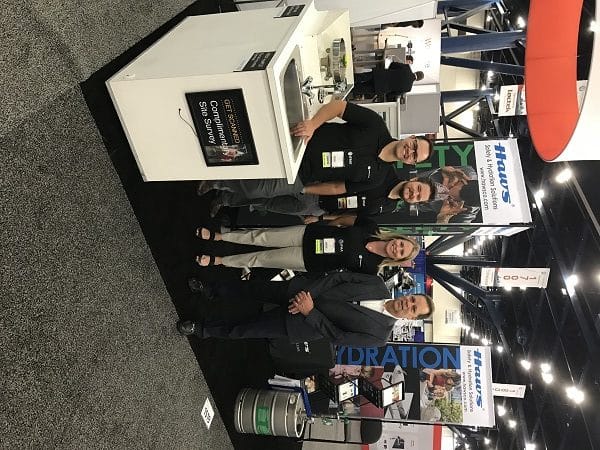
Haws AG also displayed at the A+A in Dusseldorf Germany. All aspects of safety, security, and health at work were brought together October 17-20, 2017 at the international trade forum that is A+A. Haws was able to present our emergency equipment and safety solutions to a global and highly qualified expert audience of decision-makers.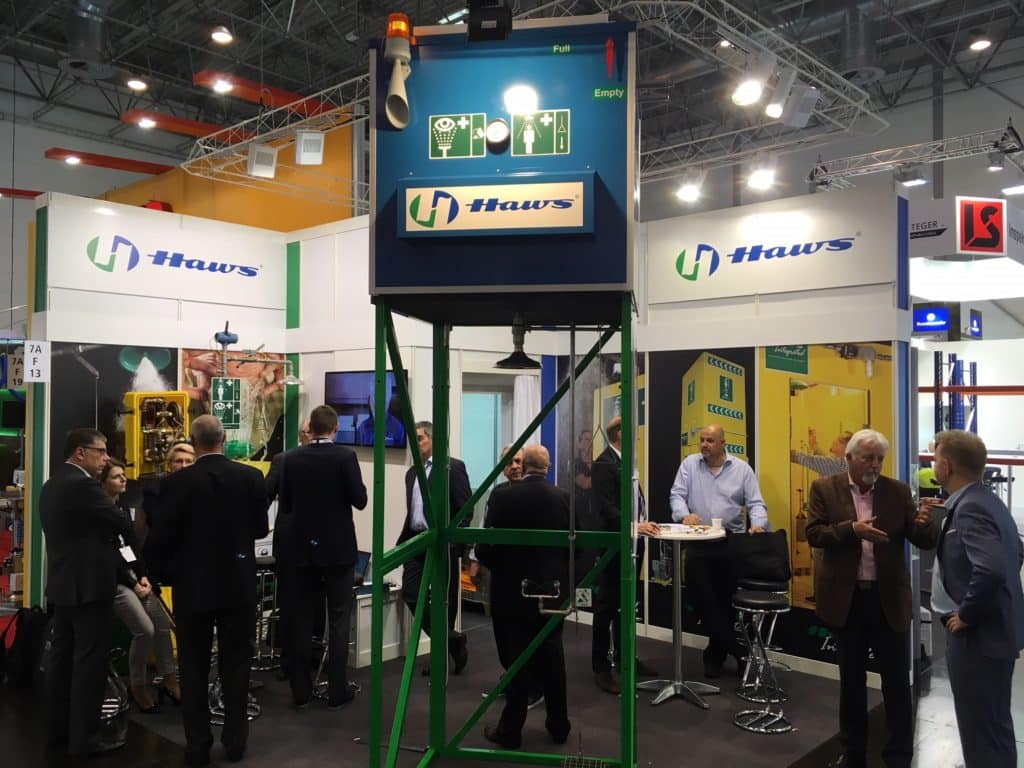
By Rapichan Phurisamban and Peter Gleick
In February of 2017, the Pacific Institute released a white paper entitled Drinking Fountains and Public Health: Improving National Infrastructure to Rebuild Trust and Ensure Access, which highlighted the limited evidence of a link between illness and disease outbreaks and drinking fountains. The report found that most problems could be traced to contamination from poor cleaning and maintenance or old water infrastructure in buildings, and called for comprehensive testing of drinking fountains, implementation of standard protocols for fountain maintenance, and a nationwide effort to replace old water infrastructure, which can be the source of lead and other contaminants.
One aspect of efforts to expand access to fountains is to take a look at current drinking fountain technology and identify features that can help ensure their quality, convenience, and reliability. Ultimately, these features can help increase public confidence and access to high quality and affordable tap water.
A gallon of tap water from typical municipal water systems costs about half a cent, making drinking fountains the cheapest hydration source available in public spaces (and of course, almost all public fountains are completely free to the user). This cost may increase somewhat depending on the purchase, installation, and maintenance costs for each drinking fountain, but it remains far cheaper than the cost of bottled water, which typically ranges from $1 to $5 per gallon, or about 200 to 1,000 times more than tap water. (High-end bottled waters can be even far more costly.) These costs do not include the environmental costs of the bottled water industry.
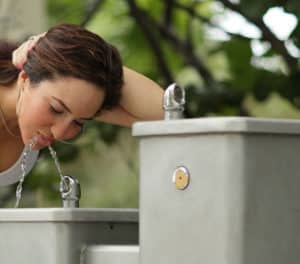 With many useful features that increase water quality and convenience, drinking fountains need no longer be the forgotten relics of the past. Cities, park districts, schools, hospitals, and other entities managing public spaces can offer fountains with many available options, including vandal resistance, freeze resistance, refrigeration, bottle filling, and filtration. Josselyn Ivanov provides a useful infographic of drinking fountain typologies, some of which are described below.
With many useful features that increase water quality and convenience, drinking fountains need no longer be the forgotten relics of the past. Cities, park districts, schools, hospitals, and other entities managing public spaces can offer fountains with many available options, including vandal resistance, freeze resistance, refrigeration, bottle filling, and filtration. Josselyn Ivanov provides a useful infographic of drinking fountain typologies, some of which are described below.
Drinking fountains located outside will need to include features to help weather the elements, such as exposed aggregate finishes to prevent corrosion. Extremely durable cast iron fountains can withstand harsh weather, but are not appropriate for beach settings as they are prone to rusting when exposed to a constant high-moisture environment. Stainless steel fountains are more suitable in such cases; in fact, they are one of the most popular fountain types due to minimal maintenance needs and low cost. Vandal-resistant fountains are a great fit for high-traffic areas as they are equipped with heavy-duty parts such as galvanized frames and steel cabinets, which protect against damage and wear. In cold regions, a freeze-resistant feature allows fountains to continue to function by preventing damage from pipe freezing and breakage. (These units must be connected to waterlines buried below the frost line in order to prevent the incoming water from freezing.)
Other fountain features can be added to cater to users’ needs. Fountain bubblers (or spouts) vary from the very basic, such as a spigot, to the much more advanced. The most common is the arc bubbler, which is equipped with a mouth guard to prevent direct contact.
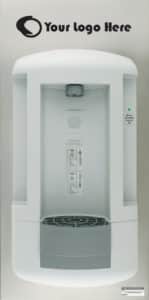 The most notable improvement in drinking fountains in recent years has been the bottle filling option. The demand for bottle filling stations or bottle filler attachments increased significantly between 2010 and 2015 due to the proliferation of refillable bottles, the ease of use of these stations, and less perceived risk of contamination. At these stations, users can rapidly fill up their personal bottles, and then the water will automatically shut off to prevent waste. Bottle fillers can be installed as standalone stations, as attachments to existing fountains, or as models that come with a drinking fountain. Many of these bottle filling stations include a digital display showing the number of disposable plastic bottles saved from landfills. The cost of a bottle filling station can range from as low as $500 per unit for a retrofit kit (an attachment) to over $1,700 for a standalone freestanding model.
The most notable improvement in drinking fountains in recent years has been the bottle filling option. The demand for bottle filling stations or bottle filler attachments increased significantly between 2010 and 2015 due to the proliferation of refillable bottles, the ease of use of these stations, and less perceived risk of contamination. At these stations, users can rapidly fill up their personal bottles, and then the water will automatically shut off to prevent waste. Bottle fillers can be installed as standalone stations, as attachments to existing fountains, or as models that come with a drinking fountain. Many of these bottle filling stations include a digital display showing the number of disposable plastic bottles saved from landfills. The cost of a bottle filling station can range from as low as $500 per unit for a retrofit kit (an attachment) to over $1,700 for a standalone freestanding model.
Water chilling is another feature that makes modern fountains attractive to users. Chilling is typically available for indoor units where they can be connected to an electrical supply. Some fountains have built-in chillers, but existing non-refrigerated fountains can also be retrofitted with remote chillers. Alternatively, ice-chilled models or drinking fountains equipped with solar power systems can be used in areas that lack access to a power supply. Most fountains can dispense up to 6.6 gallons of chilled water per hour, but in high-traffic areas, a fountain should be able to dispense at least eight gallons of chilled water per hour.
With the Flint water crisis raising awareness of potential lead contamination in tap water, the installation of filters can reduce risks in contaminated fountains until aging pipes, lead solders, and other sources of contamination can be effectively removed. There are many different types of filters, the most common being activated carbon, which may be integrated with other filter media to increase filtration efficacy. The cost of carbon filters ranges from $90 to $160 per unit, depending on filtration capacity and effectiveness, and filters must be replaced according to the manufacturer’s maintenance schedule, typically once or more each year depending on use.
In addition to carbon filters, reverse osmosis (RO) is an advanced filtration process that is also used by desalination plants. The process involves pre-screening the water to remove particles that can damage the RO membrane and then forcing water through a semi-permeable membrane under high pressure to filter out salts and other impurities. The finished water is then treated to increase the pH level and reduce the corrosiveness of the water. Replacement of RO membranes may be done every two to four years, but pre- and post-filters may need replacement every six to 12 months. Reverse osmosis is an energy-intensive and costly process that uses approximately three gallons of water for every gallon of filtered water produced. It is appropriate for removing contaminants that cannot be effectively removed by carbon filters, such as arsenic, hexavalent chromium, nitrate, and perchlorate. Other methods for removing contaminants include ceramic filters, distillers, and UV light units used to disinfect water. Since filters add to the cost of water fountains, water quality tests should be done before making any filter investments to both ensure that filters are needed and to identify the most appropriate type of filter to install.
Drinking fountains must comply with the NSF/ANSI 61 Standard, which regulates the levels of contaminants, including lead, that can leach from the fountain unit into the water. Most publicly accessible spaces that provide drinking fountains are also required to meet standards specified by the American with Disabilities Act (ADA). These standards pertain to fountain installation, location, and other specifications (e.g., water pressure) that aim to provide the greatest access to the disabled.
More effort is needed to improve access to affordable and safe drinking water at the national, state, and local levels. While we push for the broad upgrade of water infrastructure, we must also engage with cities, park districts, schools, and other institutions to rebuild public confidence in drinking fountains.
As we move toward better public drinking water access, whether installing new fountains or replacing old ones, we should strive to use the most appropriate fountain designs in order to effectively provide high quality and affordable tap water to all who need it.
[via Huffpost]
By Stephanie Kilroy
One hundred and ten years ago, Luther Haws created a drinking solution that would become the first product for Haws Sanitary Drinking Faucet Company. Luther saw children drinking from a common cup on a playground at a public school; as a result, he invented a bubblerhead drinking faucet. This innovation sparked what would eventually be an enterprise business employing over two hundred employees globally.
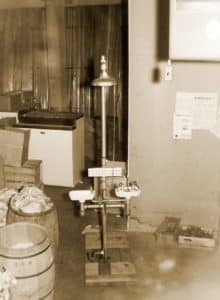
The product innovation initiated by Luther Haws continued across generations. In the 1940’s, maintenance men from an oil refinery in Richmond, CA would come by the Haws plant in Berkeley to shop for parts: round ball type bubblers, flow regulator and fittings. After inquiring about the need for these spare parts instead of completed models, Haws was informed that these parts were being used to build equipment to flush eyes. Employees at Haws sought to understand the needs of the customer and began making these emergency eyewashes and drench showers for them. This was the unofficial launch of Haws emergency equipment products; the earliest drawings date back to 1949.
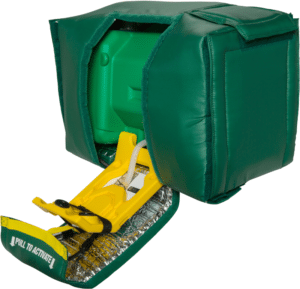 Haws employees have great pride in our innovative spirit which continues to thrive in 2017. One of Haws’ recent accomplishments has been the development of a professionalized R&D department. Under the leadership of Michael Joyer, new ideas are being generated regularly with many of these innovative ideas already introduced to the market. For example, the 7501T Tempered, Gravity-Fed, Portable Eyewash was one of the first products borne out of the R&D lab.
Haws employees have great pride in our innovative spirit which continues to thrive in 2017. One of Haws’ recent accomplishments has been the development of a professionalized R&D department. Under the leadership of Michael Joyer, new ideas are being generated regularly with many of these innovative ideas already introduced to the market. For example, the 7501T Tempered, Gravity-Fed, Portable Eyewash was one of the first products borne out of the R&D lab.
Haws is also called to innovate, not simply with new products, but in the way we do business. We are a stable, multigenerational family company, we are learning to change and improve processes. Haws employees are looking for internal efficiencies and ways in which we can best meet the needs of our customers. Recently, the Production team has developed a cross-training initiative aimed at flexing team work assignments to serve business demands.
These types of cross-functional, support teams are increasing and delivering impactful deliverables. In Q1, Marketing and Customer Service launched a Live Chat program on the Haws website to provide immediate access to customers. The Haws China website launch is another joint effort initiative intended to widen our global marketplace coverage. Launched in Q2 2017, this was a true collaboration between the Haws China and Corporate Marketing teams. And these are just a few of the examples of all the successful small and large activities that are helping drive change to redefine how we innovate, how we grow and how we foster a culture that is rewarding for all.
One hundred and ten years later, Haws continues our commitment to inventing, designing and manufacturing hydration products as well as standardized and customized emergency response products. With more than 8,000 distribution locations and 200 employees worldwide, we continually focus on quality, service, reliability and complete solution support. Headquartered in Sparks, Nevada, USA, Haws is globally represented with locations in Switzerland, Singapore, China, India, and Brazil. For more information on Haws, visit www.Hawsco.com.
VIDEO: Haws Outdoor Drinking Fountain featured in AT&T® TV CommercialHaws Model 3500 Barrier-Free Stainless Steel Pedestal Fountain was featured multiple times throughout a recent AT&T 5G Network TV commercial. The ad, which shows what the near future might look like through the eyes of a young boy, perfectly displays innovative imagination through the eyes of a child.
As Haws celebrates its 110th anniversary this year, we are proud to say how much we value innovation, 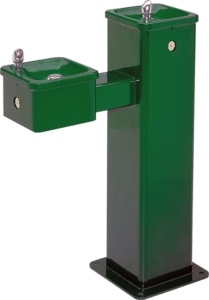 and we are more committed to fostering an innovative culture than ever before. Haws is proud to bring our customers smart innovations within the emergency response equipment and hydration products sectors.
and we are more committed to fostering an innovative culture than ever before. Haws is proud to bring our customers smart innovations within the emergency response equipment and hydration products sectors.
We invite you to innovate with Haws. Haws’ innovation center allows our customers and partners to submit their ideas to our team for review. Visit our Innovation Center page and start the conversation!
PHOTOS: Kids and Puppies Need to Hydrate TooHydration Sightings: Hail to the Drinking Fountains!
Disney Hollywood Studios
Spot a Haws Drinking Fountain while out and about? If so, snap a picture and send it to [email protected]!
America’s ToothFairy Engages Youth Leaders In Innovative Study To Assess Drinking Water Access In Schools
Healthy Eating Research Program of the Robert Wood Johnson Foundation funds water access study
In collaboration with the Nutrition Policy Institute (NPI), University of California Division of Agriculture and Natural Resources, America’s ToothFairy: National Children’s Oral Health Foundation is activating youth participants in its #MySmileMattersSM Youth Movement to aid in an innovative study to assess the state of drinking water in schools.
Funded by the Healthy Eating Research Program of the Robert Wood Johnson Foundation, the purpose of the study, Technical vs. Effective Access toWater: A Photo-Evidence Technique to Assess Drinking Water in Schools, is to investigate access to drinking water in schools and develop preliminary recommendations for effective access. The study will measure both “technical” access, the presence of some type of water source, as well as “effective” access, which includes such considerations as the condition, appearance and accessibility of the water source, water flow, water promotion and availability of cups. Drinking water researchers agree that few students will drink from old, poorly maintained drinking fountains and, when they do, they only take a few sips of water. However, studies show that effective access can significantly increase students’ water intake.
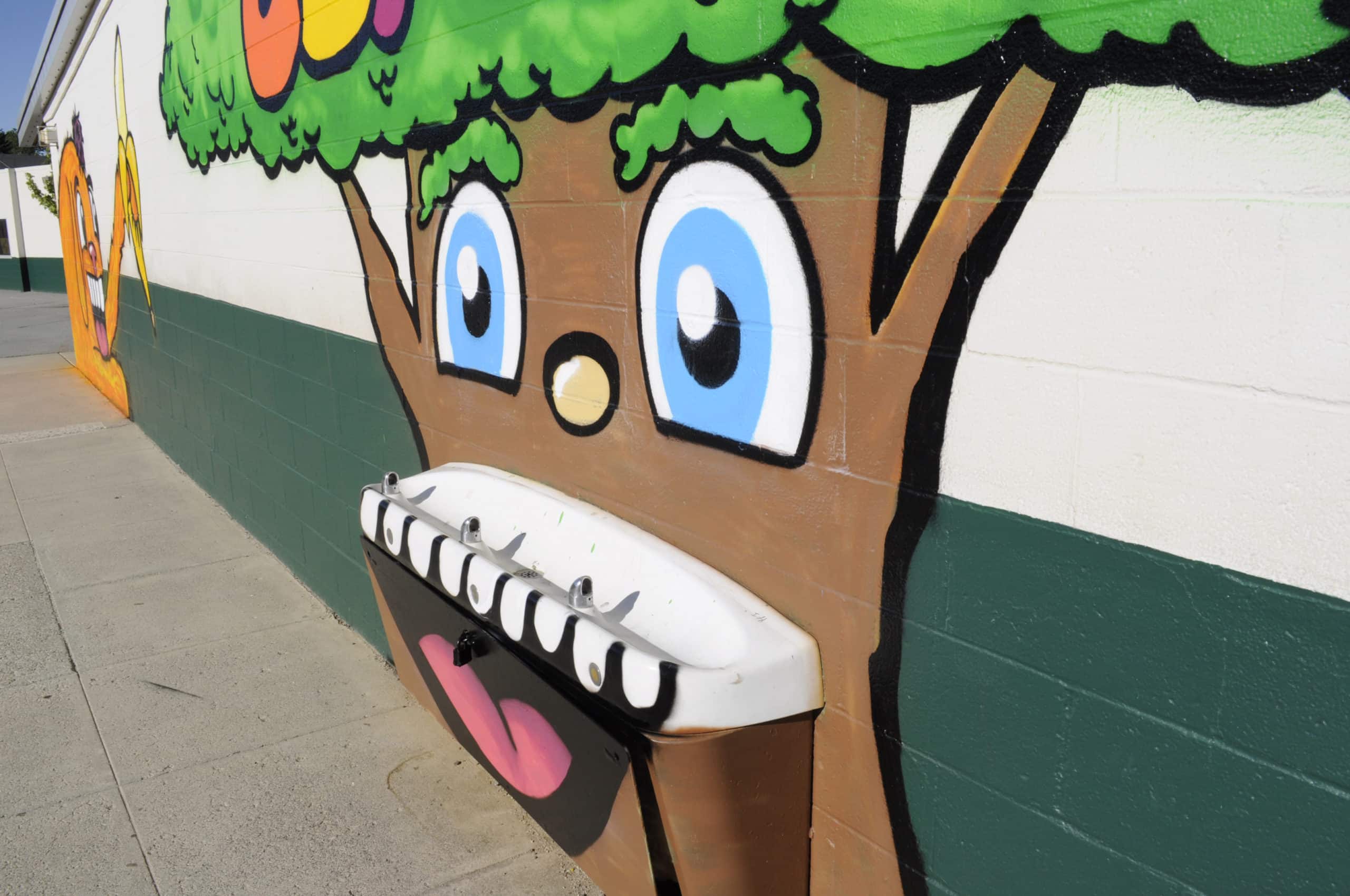
Effective access to safe drinking water gives youth a healthy, zero-calorie alternative to sugar-sweetened beverages (SSBs), the greatest contributor of sugar in children’s diets and among the top sources of calories for US children, according to The Centers for Disease Control and Prevention. If substituted for sugar-sweetened beverages, water consumption is also associated with reduced levels of tooth decay, one of the most prevalent chronic illnesses among children in the U.S.
For this study, 16 high school chapters of HOSA: Future Health Professionals will be chosen to collect photographic evidence of water access in schools. Their findings will provide insight into solutions to the challenge of ensuring all youth have access to drinking water during the school day.
“America’s ToothFairy strongly supports efforts to increase access to safe drinking water for children in school and other childcare settings,” said Fern Ingber, America’s ToothFairy President and CEO. “We are proud to engage our #MySmileMatters Youth Movement in this important effort to ensure all children have access to drinking water.”
About America’s ToothFairy: National Children’s Oral Health Foundation
America’s ToothFairy: National Children’s Oral Health Foundation is dedicated to raising awareness of one of the most prevalent chronic childhood illnesses: pediatric dental disease, facilitating the delivery of comprehensive oral health services and improving quality of life for underserved children. Through the #MySmileMatters Youth Movement, collaborative partnerships with a diverse array of national service organizations, growing network of non-profit clinical partners, dedicated professional and student volunteers, and suite of high-impact community education and service programs, America’s ToothFairy is building a powerful, united effort to eliminate tooth decay and protect the smiles of our most vulnerable children. For more information, visit www.AmericasToothFairy.org.
[via: America’s ToothFairy: National Children’s Oral Health Foundation]
